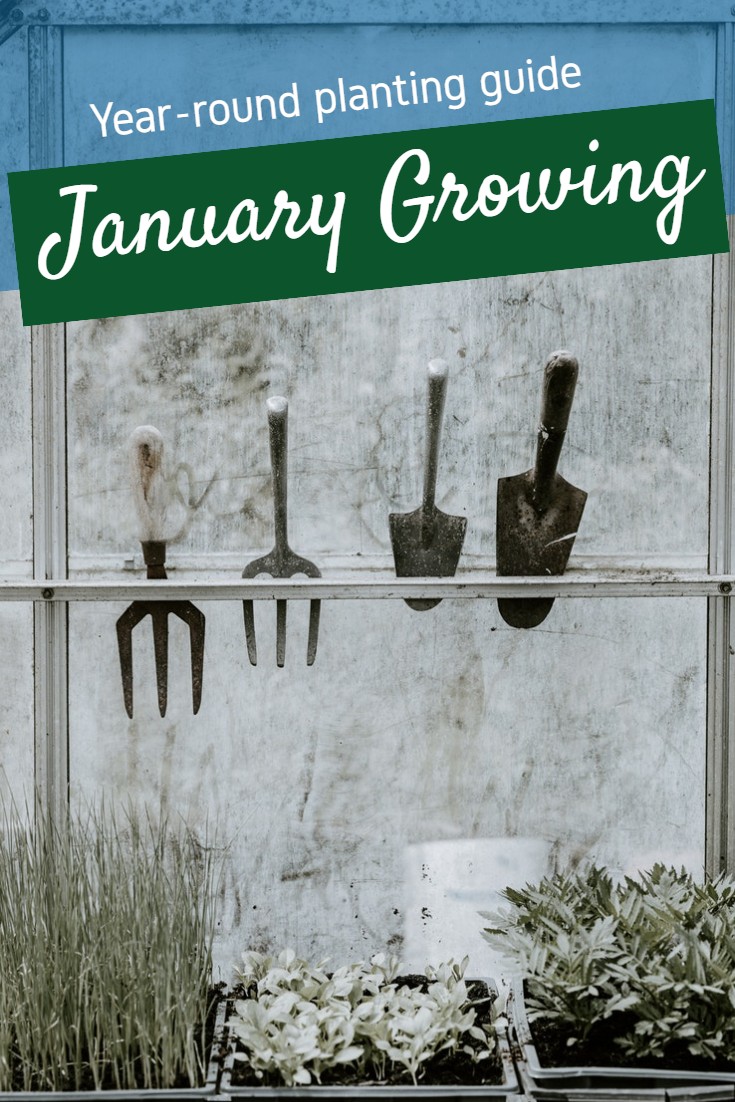Though many people don’t think of January as a prime time for growing, here at Gothic Arch Greenhouses, we know that planning for a full year of fresh food means making the most of your time. For our third installment in our year-round growing guide, we’ll focus on more herbs, veggies, and fruits you can start growing in January.
For most of us, the harshest weather of the year is just ahead. If you’re growing in a greenhouse, or on an enclosed balcony or window sill, consider adding some insulation. A cheap but effective way to increase your frost protection is to use bubble wrap or18beplay官网 to cover your glass. This will allow sun-loving winter veggies to still get plenty of diffuse light while being protected from cold.
To keep plants at their healthiest during winter when growth is slow, monitor them for signs of disease, and remove to prevent spreading. In winter, water your plants sparingly to avoid possible problems with molds, mildew, and bacterial growth.
Growing Salad Greens Year-Round
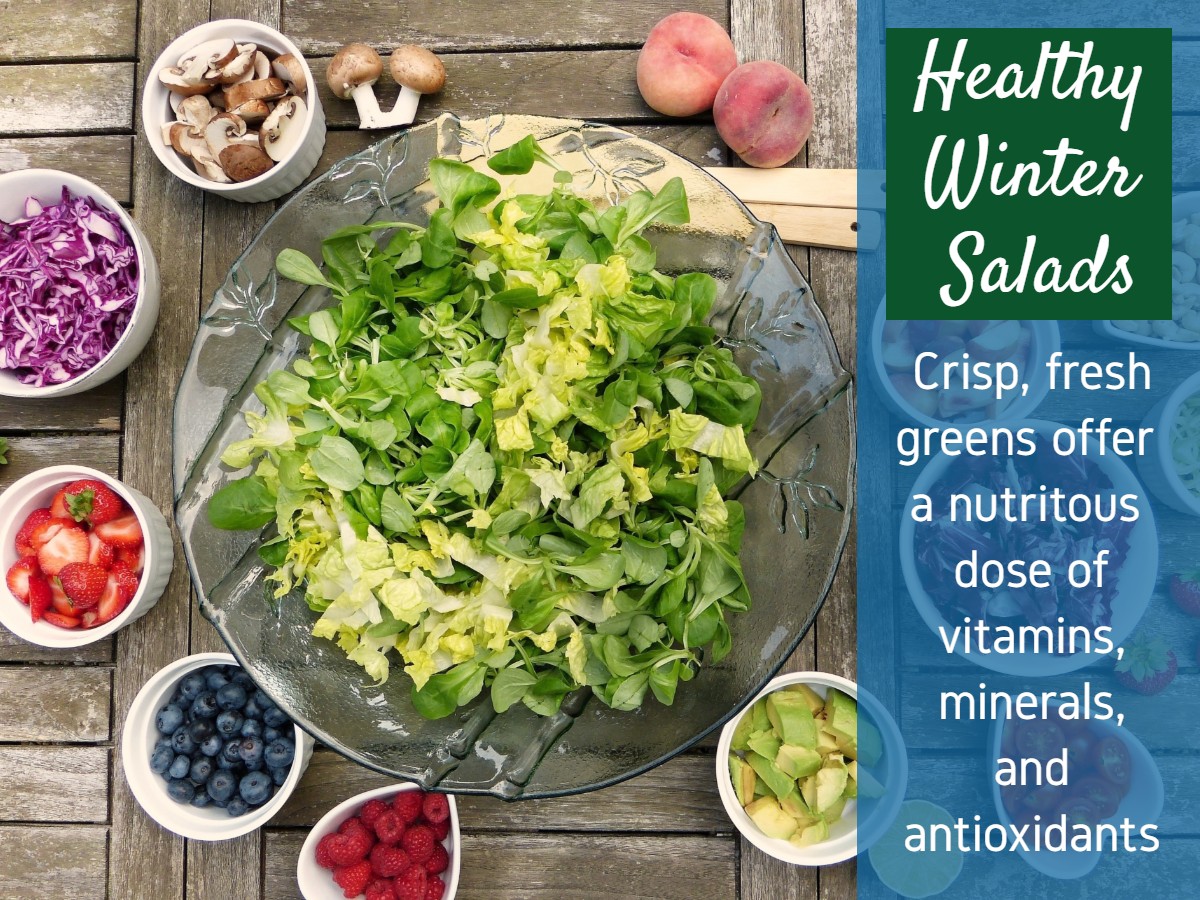
Grow nutritious greens year-round
Fresh salads are a healthy side to your typical hearty soups during the winter months. Many varieties of lettuce are too sensitive to grow in January, but others are perfect for year-round growing. Look to heartier plants such as ‘Imperial’ lettuce, endive, chicory, and radicchio, which are rugged enough to tolerate anunheated greenhousein colder weather. Kale, arugula, Swiss chard, and cabbage can also grow quite vigorously in winter as well.
绿叶蔬菜发芽,他们更喜欢土壤temperatures of 50 to 75 degrees, and well-drained soil. Plant at a 1/2” seed depth with 2-3” spacing. Avoid over-watering, and ensure adequate plant spacing to reduce pest and disease issues. Greens can be sensitive. Seedlings typically emerge in 5-20 days. Harvest leaves from the outside, and be careful of damage to the growing point. Harvest greens frequently, when young, and rinse in cold water to preserve flavor and texture.
Some other winter salad options include radishes like ‘French Breakfast’ and ‘Saxa’, Brussels sprouts, cauliflower, and broccoli.
Health Benefits of Winter Greens
Greens are always a solid choice to pack in nutrition when eating from your garden year- round. Fast and easy to grow, all types of greens are excellent sources of vitamins, minerals and phytochemicals. They are a vital part of a healthy diet, and add nutritious, low-calorie flavor to whether raw, steamed, roasted, or added to soups and stews.
Swiss chard is in the same vegetable family as the beet; however, rather than the root, it is Swiss chard’s flavorful leaves that are eaten. It is second only to spinach as world’s healthiest vegetable. It is full of anthocyanins which can lower blood pressure, improve vision, inhibit tumor growth, and lower risk of developing diabetes. Swiss chard is also fiber-dense and has anti-inflammatory and anti-bacterial activity.
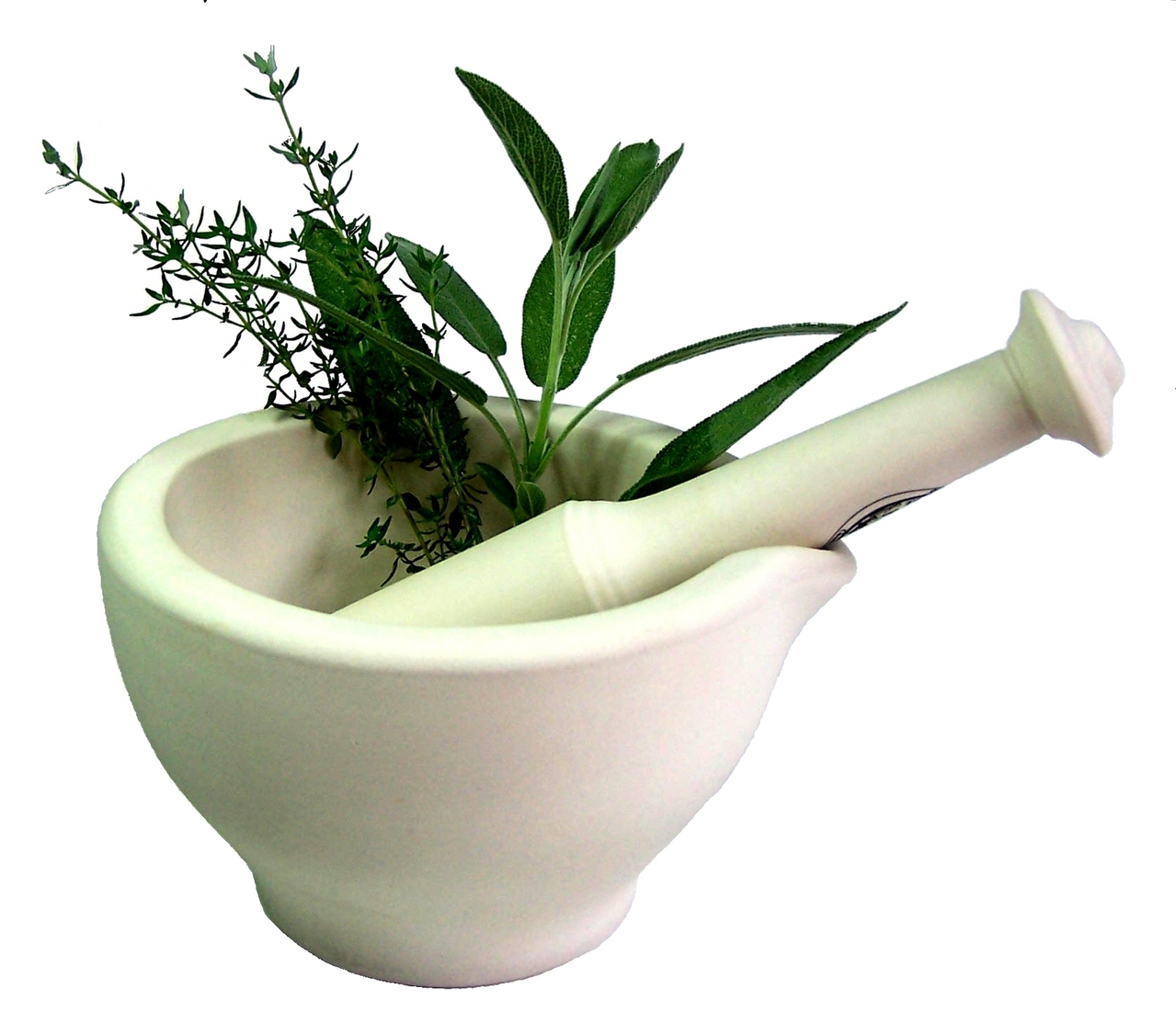
Fresh-grown Health Benefits
You’ve probably heard kale called a superfood Rich in carotenoids and flavonoids, these powerful antioxidants protect cells from free radicals and have shown promise in fighting the formation of cancerous cells. One cup of kale has just 36 calories, zero grams of fat, 684% of RDA of K, 206% of A, and 134% of C vitamins.
Growing Thyme Year-Round
There are more than 50 varieties of thyme, however the most commonly grown edible herb types are English, French, lemon, and caraway. Culinary thyme is a hardy perennial evergreen and will thrive in your sunniest indoor window this winter. Outdoors, it will enter a dormant state in winter, with new leaves emerging in spring, similar to rosemary, making it a great herb for year-round growing.
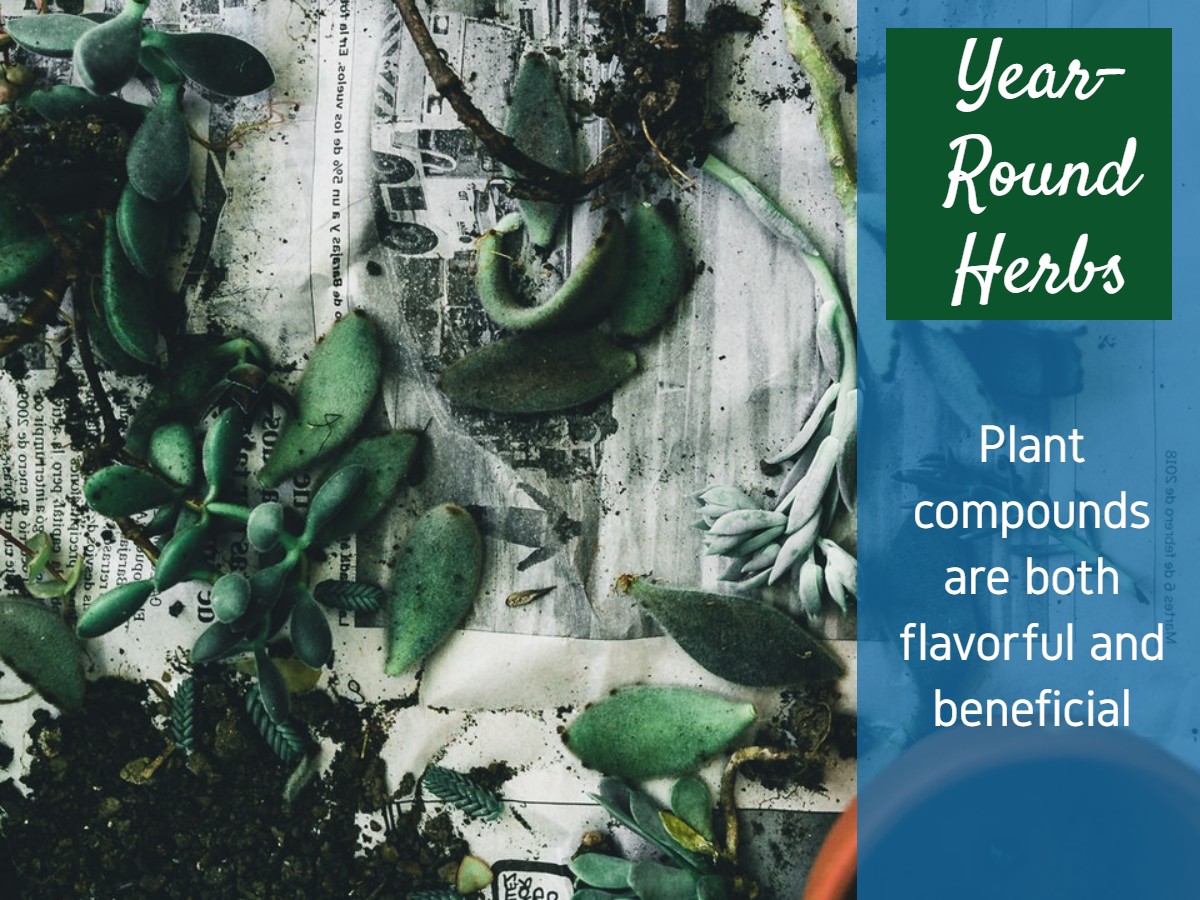
Herbs add flavor and beneficial phytochemicals to your diet
Thyme loves full sun, and will benefit from additionalcompact fluorescent light. We recommend light, fast-draining soil. Seeds can be slow and difficult to start, so you’ll probably prefer to buy a plant from a garden center or to propagate by cuttings. Avoid over-watering; thyme hates “wet feet,” so wait until soil is completely dry.
For the best, most potent flavor, harvest thyme just before the plant flowers. Regular trimming encourages vigorous growth, and a more bushy, rounded shape. Cut early in the day, and leave at least five inches of growth beyond the tough, woody portions. In the spring prune back by one third, cutting above points where you can see new growth, never below into the leafless woody stem.
Health Benefits of Thyme
Thyme is loaded with vitamin C and is also a good source of vitamin A. It’s a good source of copper, fiber, iron, and manganese. It has long been used in natural remedies, and is helpful with common cold symptoms, coughs, and bronchial infections.
Thyme is a strong antiseptic. Topically, it can treat cuts, scrapes, acne or sore muscles. It contains thymol, carvacrol, borneol, and geraniol, which are a naturally occurring class of compounds known as biocides. These substances can destroy harmful, infectious bacteria. In fact, one study from 2010 suggests that thymol can reduce bacterial resistance to common drugs, including penicillin. Another test-tube study found that thymol and carvacrol inactivated 90% of the herpes simplex virus within just one hour.
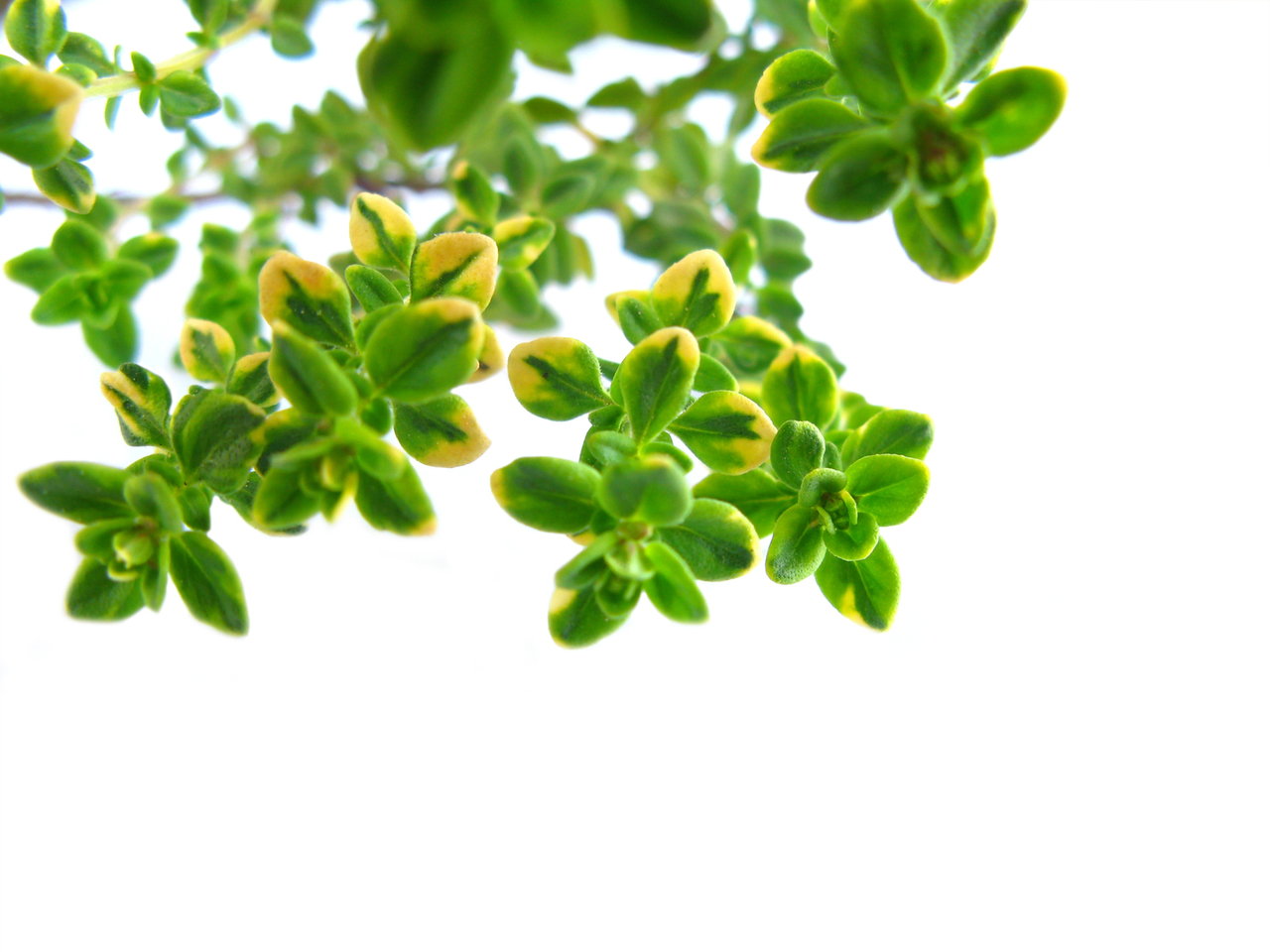
Thyme is a powerful antibacterial you can grow year-round
Thyme’s many volatile oils have strong antimicrobial properties. A 2011 Polish study reported that thyme oil, even at low concentrations, was effective against resistant strains of Staphylococcus, Enterococcus, Escherichia, Pseudomonas bacteria, and deadly Shigella sonnei. These bacteria and fungi cause foodborne illness in humans.
Other benefits of thyme include its ability to significantly increase healthy fats throughout cells, and to increase DHA content in kidney, heart, and brain cell membranes. This omega-3 fatty acid is essential to cellular health. Thyme’s rosmarinic and ursolic acids are powerful terpenoids, which have shown promise as a cancer preventive. Recent Turkish research has found that thyme caused cell death in breast cancer cells. Ursolic acid is being researched due to its potential to reduce the expression of markers of cardiac damage in the heart.
Further Year-Round Growing Options
Your path to a fresh, nourishing new year can be as large or as small of an undertaking as you choose. Whether your growing space, budget, and time allow for a full garden plot to feed your entire family, for a window sill of herbs, or anywhere in between, we hope to show you that there are benefits you can reap at any level.
If you’re making a long-term commitment to more sustainable living, also consider planting citrus for next year. Grown indoors, you can pick your own fresh citrus year-round. January is also a good time to plant peaches. You might consider starting a permanent asparagus bed this year. Asparagus can take a few years to establish, but soon you’ll have a winter vegetable crop every year thereafter.
Whatever your growing plans, Gothic Arch Greenhouses offers the bestgreenhousesandgrowing suppliesfor sale anywhere. We’d love to be part of your journey to a healthy and happy new decade. Happy Growing!

